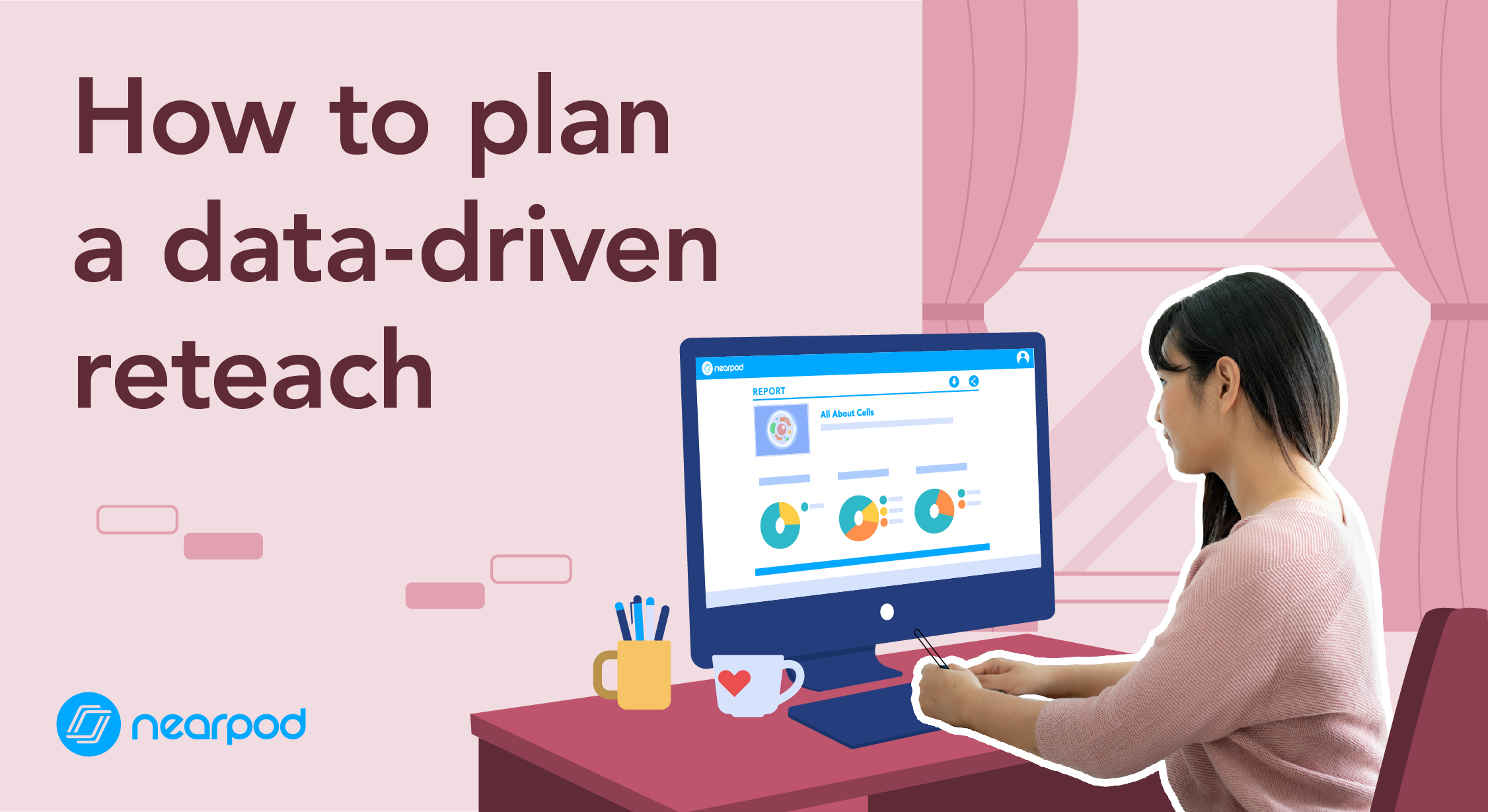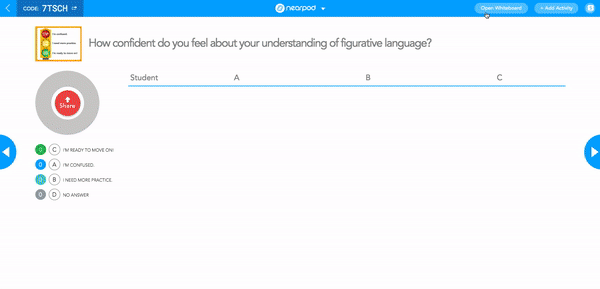
How to plan a data-driven reteach
Every teacher wants their students to master all their course’s material, but it is unrealistic to expect 100% of your students to master 100% of the material you teach the first time you teach it. Students have varying knowledge, levels of skill and learning styles. The only way to reach every student is to plan strategic reteaches according to what your students know. Fortunately, with technology today, you can do deep analysis on your students’ performance easily.
Summative assessments—such as standardized tests or class exams—provide teachers with crucial insight into class trends. Analyzing that data gives us a tangible sense of how deeply they have learned a topic. It elucidates their strengths and weaknesses. With Nearpod, teachers can give a quiz as a summative assessment of the unit and analyze the data from a Nearpod post-session report for insight into the effectiveness of their teaching. The quickest way to close gaps in your classroom is intentional instruction that responds to what you see here.
Analyzing test data can seem overwhelming but it does not have to be. To effectively analyze summative data, follow these steps:
1.Calculate the average student performance for each standard on the exam.
2. Analyze the questions aligned to low-performing standards and look for trends in the incorrect responses of your students. Are students selecting the same wrong answers? Is there a conceptual misconception that needs to be cleared up? Are there lagging skills students need to perform this task
3. Look at actual student work to understand misconceptions more deeply. Are there patterns in student errors that you couldn’t see from just the data?
4. Select low-performing, high priority standards for whole-class reteaches. Try and interpret the standard deeply: what would students have to know or be able to do to show they’ve mastered a standard?
5. Identify the students who lack the background knowledge to master that standard so you could provide extra scaffolding
6. Identify other standards where smaller pockets of students haven’t shown mastery to plan small-group remediation
When you plan your reteach, bring this analysis into your planning. Be sure you explicitly name the error or conceptual misconception you found, and then get interactive! The more your kids can explore and attempt similar challenges, the stronger their understanding will be.
Nearpod is an ideal platform to address errors and misconceptions. With numerous formative assessment options, teachers can take the information from these assessments and address any misconceptions in the moment. Even better, teachers can use the live whiteboard to address an error or misconception in a lesson before it’s too late, supporting students better than ever.

One strategy is to reteach through a “chart the error” problem. In this type of lesson, students are shown an incorrect work sample, and must analyze the incorrect work. (Usually, this incorrect work reflects the most common mistake revealed in the data). In Nearpod, teachers can use a Draw It activity for this method. Students interact with the problem by annotating the mistakes made by the incorrect student. Then, they actively markup and correct the student’s work. Nearpod’s Draw It is a perfect way to support student annotation of an error.
Another method for reteaching is asking students to vote between two pieces of work. In this strategy, students see two work samples; one sample shows correct work, and the other shows work that reflects a common misconception among your students. Students look at both answers, and then answer a Poll where they vote for which student answered the question correctly. With a poll on Nearpod, you’ll get immediate and personalized information from the polling data, you can cherry-pick students who voted correctly to share their thinking with the class and support students who may be struggling. For deeper reteaching moments, use the results to divide your students into targeted work groups.

After implementing your lesson, always have a plan to reassess so that you could gauge the effectiveness of your reteach and guide further instruction. With targeted interventions and creative, interactive lessons, your students will thrive.

Nearpod’s award-winning platform is used by thousands of schools around the globe, transforming classroom engagement.








